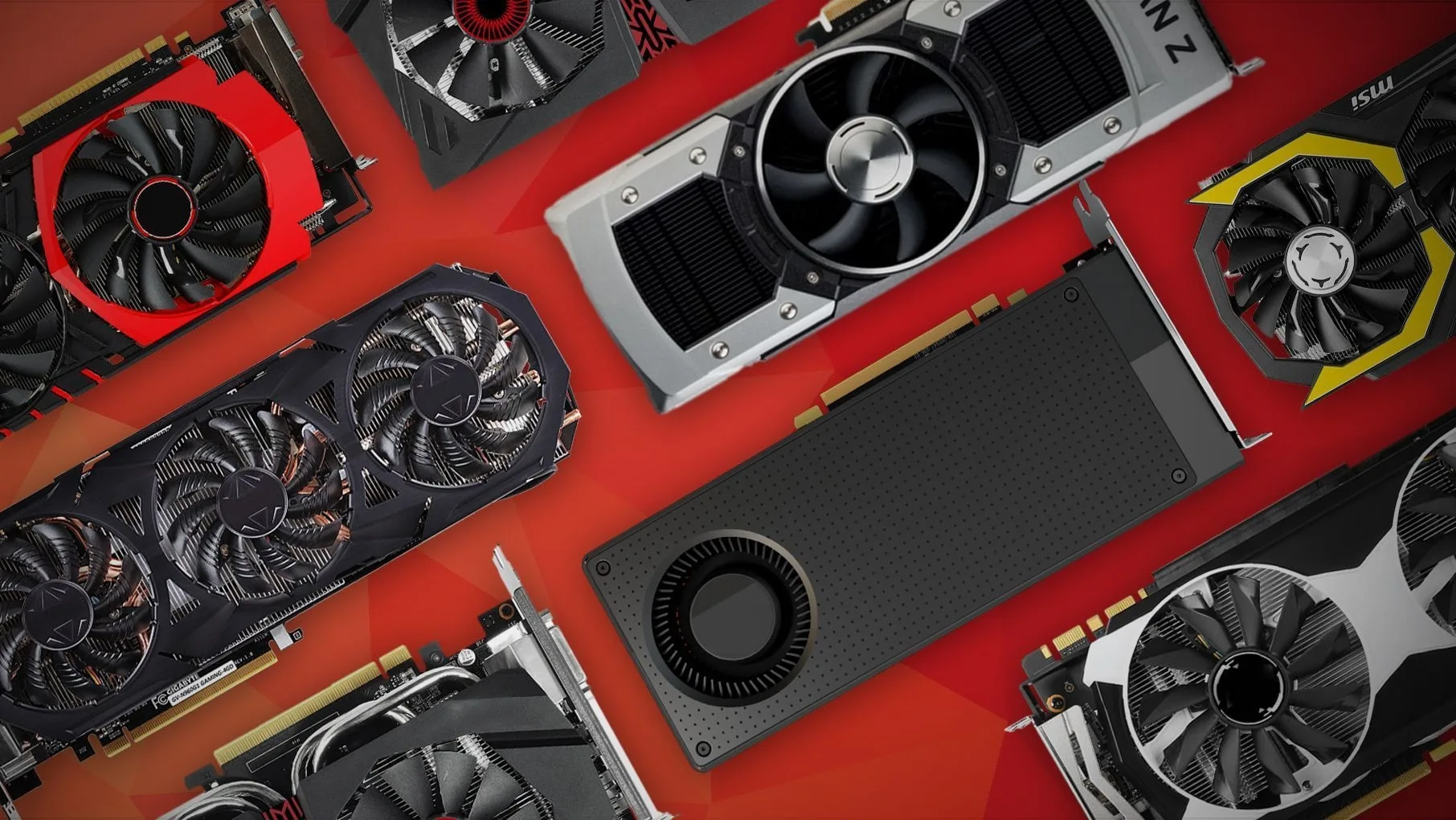
Graphics cards have become increasingly pricey, with the RTX 4090 commanding a hefty price tag exceeding $1,500. However, there was a time when the budget GPU market was a thrilling space. AMD and Nvidia regularly introduced groundbreaking options even at entry-level price points. Personally, my favorite budget GPUs from the past include the GTX 1060 and RX 480, which debuted at $249 and $199, respectively. While the competitive landscape in the budget GPU market may have shifted, we’ve explored many excellent options priced up to $350.
Selecting the right budget GPU involves more than just considering performance and price. Compatibility with your build is crucial, requiring assessment of whether the card can physically fit inside your PC case. You’ll need to ensure that both the horizontal and vertical dimensions of the graphics card align with your PC’s specifications.
Furthermore, it’s essential to confirm that your power supply unit (PSU) can deliver sufficient power to meet the demands of your chosen GPU. To ensure a smooth transition to your new graphics card, it’s advisable to consult our comprehensive GPU installation guide.
1. Radeon RX 7600 XT – Best Budget GPU from AMD
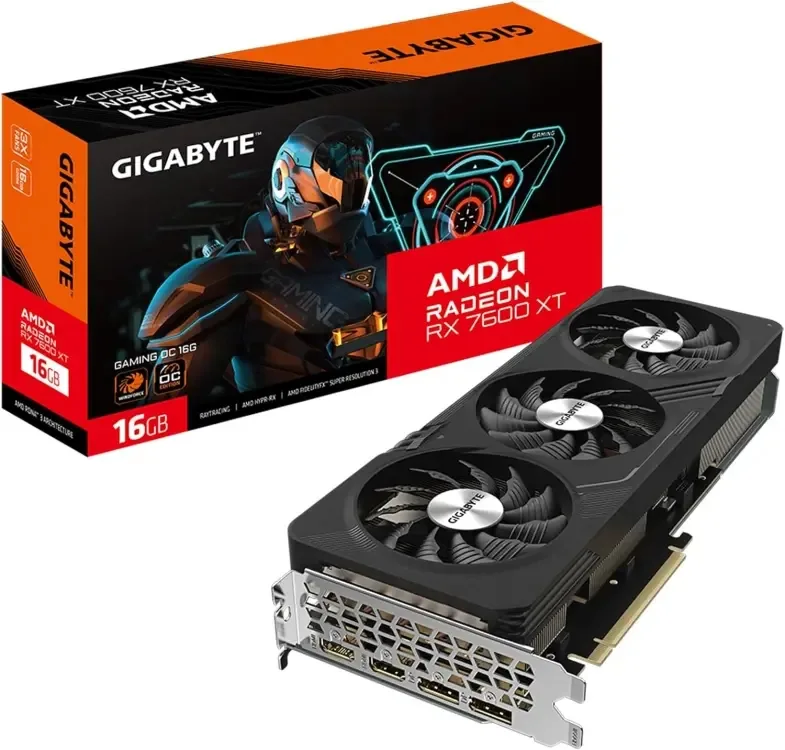
- VRAM & Effective Memory Clock: 16GB GDDR6 18 Gbps
- Boost Core Clock: 2755 MHz [Depends on AIB]
- Thermal Design Power (TDP): 190W
- Stream Processors: 2,048
- Transistor Count: 13,300 Million
- Manufacturing Process: 6 nm
The AMD RX 7600 XT presents a compelling option for those seeking a graphics card under $350. With a generous 16GB of GDDR6 VRAM, concerns about running out of video memory during gaming sessions are alleviated. This ample VRAM capacity is particularly advantageous for running modern AAA titles, which often benefit from higher VRAM resources—a trend expected to intensify with the advent of newer game generations.
In terms of performance, the RX 7600 XT edges ahead of the RTX 4060, though it’s worth noting that it may still lag behind the RTX 4060 Ti. Additionally, users can enhance their gaming experience by enabling features such as AFMF (Advanced Fluid Motion Frames) via driver settings, potentially doubling frame rates in games through AI frame generation.
The ASUS dual variant of the RX 7600 XT boasts a sleek black theme with prominent brand elements adorning the backplate. Conversely, the Sapphire Pulse model incorporates striking red accents to complement the GPU’s black aesthetic. Furthermore, the dual fan models are notably compact, making them suitable for smaller PC cases. For those with larger cases, triple fan models offer an alternative option.

2. GeForce RTX 4060 8GB – Best Budget GPU from NVIDIA

- VRAM & Effective Memory Clock: 8GB GDDR6 17 Gbps
- Boost Core Clock: 2460 MHz [Depends on AIB]
- Thermal Design Power (TDP): 115W
- CUDA Cores: 3,072
- Transistor Count: 18,900 million
- Manufacturing Process: 5 nm
Nvidia’s GeForce RTX 4060 emerges as Team Green’s standout offering in the new generation, priced under $300. While its raw performance may not significantly outpace its predecessor, the RTX 3060, some view its launch as underwhelming. Nonetheless, it remains a respectable option for gaming, notably supporting DLSS 3 frame generation. With DLSS 3 activated, gamers can enjoy modern titles at higher settings, with even demanding features like RT Overdrive in Cyberpunk 2077 becoming playable on the RTX 4060.
Boasting a modest power requirement rated at 115W TDP, the RTX 4060 is energy-efficient. However, its 8GB of VRAM may pose limitations, particularly when pushing the graphical boundaries of games. While achieving 1440p resolution may be challenging, it’s adequate for less demanding titles. Despite its limitations, the RTX 4060 remains a viable option, especially considering its availability below its initial launch price several months after release.
Given its low power demands, the market offers numerous compact options for the RTX 4060. Additionally, the GPU’s price has occasionally dipped below its MSRP, enhancing its value proposition. For those seeking smaller form factors, the MSI Ventux 2X variant boasts a sleek all-black design and dual fans. Alternatively, the Gigabyte Eagle variant, featuring triple fans with a WindForce cooling system, offers enhanced cooling performance for those with larger cases. With a grey finish and blue accents, it adds a touch of style to the gaming setup.

3. AMD Radeon RX 7600
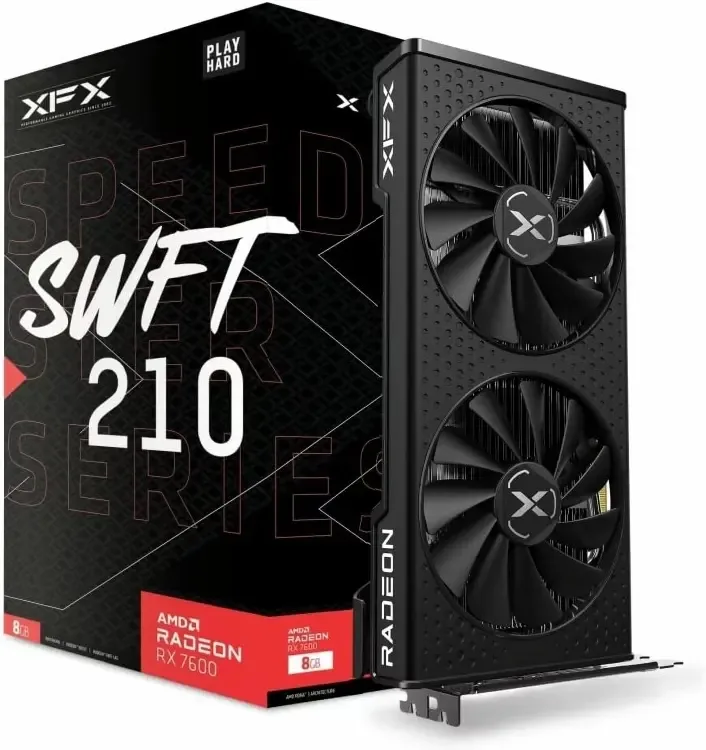
- VRAM & Effective Memory Clock: 8GB GDDR6 18 Gbps
- Boost Core Clock: 2655 MHz [Depends on AIB]
- Thermal Design Power (TDP): 165W
- Stream Processors: 2,048
- Transistor Count: 13,300 Million
- Manufacturing Process: 6 nm
The AMD Radeon RX 7600 serves as Team Red’s response to the RTX 4060, offering compelling value at a lower price point. In this budget range, finding a GPU with generous VRAM capacity is a rare find, making the RX 7600 an attractive option. While it performs admirably for 1080p gaming, maxing out settings may not always be feasible, depending on game intensity. Additionally, the performance boost over its predecessor, the RX 6600, is not particularly significant.
To enhance performance in DX11/DX12 games, users can activate the AFMF feature via driver settings, enabling AI frame generation for satisfactory overall performance. Often priced below its launch MSRP, the RX 7600 is occasionally available for as low as $240-$250.
Among the most budget-friendly Radeon RX 7600 GPUs is the XFX SWFT 210 variant, boasting dual fans and a sleek black design with the brand logo prominently displayed on the backplate. For a slight premium, the Gigabyte Gaming OC variant offers triple fans and RGB support, with the logo showcased on the side of the graphics card.

4. Intel Arc A750 – Best Value for Money Budget GPU
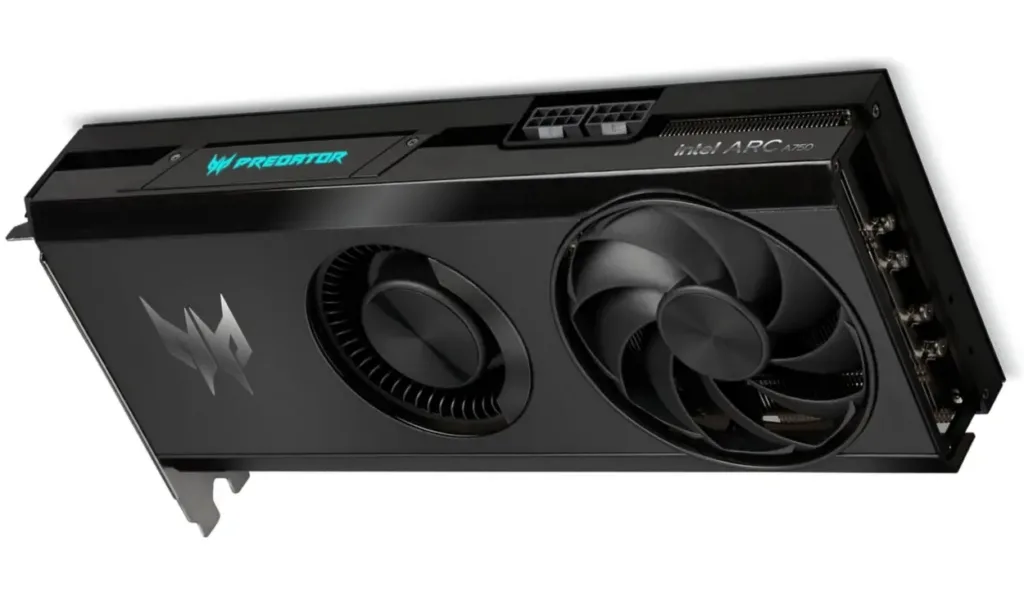
- VRAM & Effective Memory Clock: 8GB GDDR6 16Gbps
- Core Clock: 2050 MHz
- Thermal Design Power (TDP): 225W
- Xe Cores: 28
- Ray Tracing Units: 28
- Transistor Count: 21,700 Million
- Manufacturing Process: 6 nm
Intel’s foray into the graphics card market appears promising, with the Intel Arc A750 emerging as a standout option in the $200 price range. Heavily discounted from its original MSRP of $289, this GPU delivers impressive performance, particularly after several driver updates that have made it competitive against other offerings. As a result, it stands out as one of the best value-for-money budget GPUs in 2024.
However, it’s essential to note potential stability issues that users may encounter, especially with certain games like Starfield and GTA V still experiencing issues with Intel Arc graphics cards. Additionally, due to its 225W TDP, the Arc A750 requires 2x 8-pin GPU power connectors, which may not be suitable for all setups. While not suitable for everyone, for those willing to tinker and exercise patience, it can be a satisfying GPU to own given its price point.
Among the options available, the Acer Predator BiFrost variant stands out with its hybrid cooling featuring a ‘vapor chamber’ alongside dual fans, offering a unique design aesthetic. Moreover, it includes RGB lighting with the Predator logo, adding flair to the setup. Alternatively, the Sparkle Titan Arc 750 boasts dual fans with a sleek black design and blue accents on the GPU shroud, providing another visually appealing option. While Intel GPUs currently lack AI frame generation technology, there are indications that developments are underway in this area.

5. AMD Radeon RX 6600 8GB

- VRAM & Effective Memory Clock: 8GB GDDR6 14 Gbps
- Boost Core Clock: 2491 MHz [Depends on AIB]
- Thermal Design Power (TDP): 132W
- Stream Processors: 1,792
- Transistor Count: 11,100 Million
- Manufacturing Process: 7 nm
The AMD Radeon RX 6600 stands as Team Red’s affordable solution under the $200 price point, maintaining its relevance as a capable budget gaming graphics card tailored for 1080p gaming. Despite trailing its successor, the RX 7600, by approximately 20-25%, the RX 6600 remains a solid choice from the previous-generation GPU lineup, originally launching at $329 but now available for under $200.
For 1080p gaming, the RX 6600 performs admirably across various modern titles, even at high settings, making it a baseline recommendation for 2024. Options below this tier significantly compromise gaming performance. Additionally, the RX 6600 supports AMD’s AFMF technology, enhancing its performance potential.
The PowerColor Fighter variant, featuring dual fans and a basic black design sans backplate, offers a no-frills yet effective solution, representing one of the most budget-friendly RX 6600 GPUs on the market. Meanwhile, the ASRock Challenger RX 6600 graphics card boasts dual fans, providing another affordable option for gamers seeking solid performance at a reasonable price.

6. NVIDIA GeForce RTX 3050 6GB
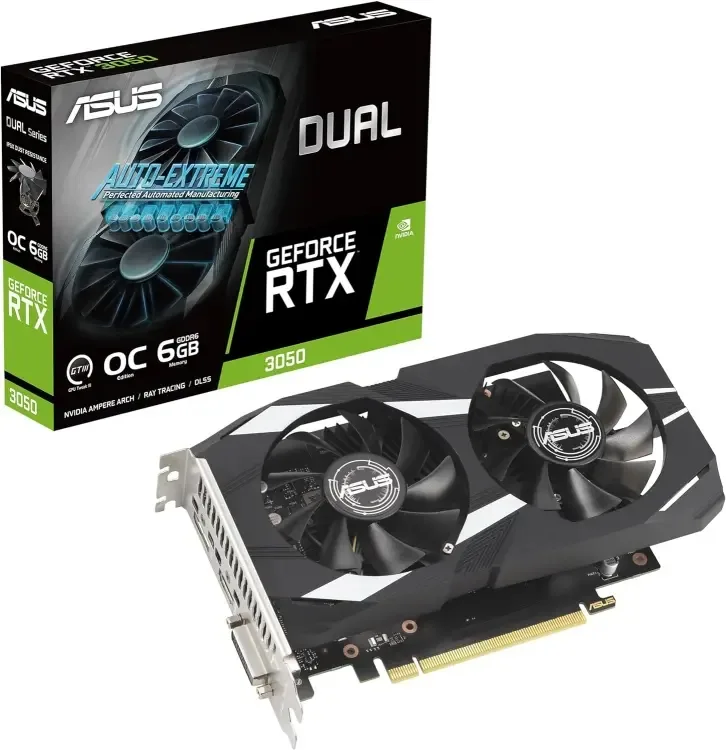
- VRAM & Effective Memory Clock: 6GB GDDR6
- Boost Core Clock: 1470 MHz [Depends on AIB]
- Thermal Design Power (TDP): 70W
- CUDA Cores: 2,304
- Transistor Count: 8,700 Million
- Manufacturing Process: 8 nm
Nvidia’s GeForce RTX 3050 6GB may be a recent addition to the company’s lineup, but it’s not exactly a new GPU, as it utilizes the older RTX 30 series architecture. While it falls short in performance compared to its 8GB counterpart, the RTX 3050 6GB still offers some advantages. As the most affordable RTX GPU for desktops currently available, it supports DLSS for image quality and performance enhancements.
Moreover, the RTX 3050 6GB comes at a significantly lower price point than the 8GB variant, with several brands offering it for under $200. However, in terms of performance, there’s room for improvement, leaving some users feeling underwhelmed. Nevertheless, it serves as a viable option for upgrading GPUs in older builds, as it doesn’t require dedicated PCIe power connectors and draws power solely from the PCIe slot. While it may not meet everyone’s expectations, it represents Nvidia’s offering in the $200 price range for now, with hopes for better-performing options in the future.

7. Intel Arc A380 – Most Affordable Modern GPU

- VRAM & Effective Memory Clock: 6GB GDDR6 16Gbps
- Core Clock: 2200 MHz
- Thermal Design Power (TDP): 75W
- Xe Cores: 8
- Ray Tracing Units: 8
- Transistor Count: 7,200 Million
- Manufacturing Process: 6 nm
The Intel Arc A380 emerges as the most budget-friendly modern GPU currently available for purchase. While its performance may not excel in demanding modern games, it serves as an ideal option for entry-level gaming. With 6GB of GDDR6 memory and a power requirement of 75W, it offers comparable performance to a GTX 1650.
However, being a first-generation launch of dedicated Intel GPUs, the Arc A380 shares similar stability issues with its predecessor, the Arc A750. Although driver updates are improving the situation, users may still encounter occasional instability, particularly in games like Starfield. Despite this drawback, the A380 provides added VRAM at a lower cost compared to similar Nvidia GPUs.
Another option in Intel’s dedicated Arc GPU lineup is the Intel Arc A310, which is even more affordable. However, considering the modest price difference, the A380 remains the superior choice for its slightly improved performance capabilities.

Navigating the realm of budget graphics cards has become more challenging than ever. To assist PC builders in making informed decisions or upgrading their systems, we’ve curated a list of top choices above. We hope this selection simplifies the process of selecting the right GPU under $350 for your needs.
Which graphics card stands out to you the most? Share your preferences in the comments below and feel free to reach out if you have any questions or uncertainties. We’re here to help!
